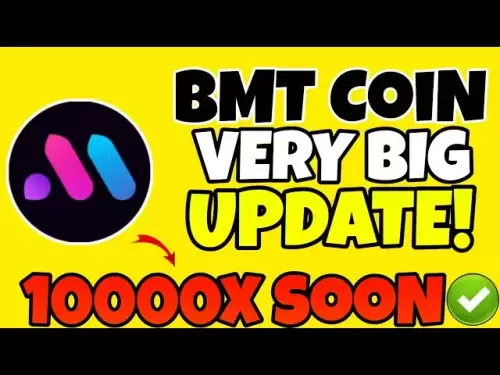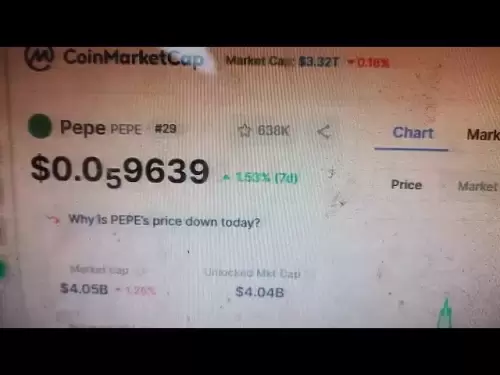-
 Bitcoin
Bitcoin $108,962.3544
0.69% -
 Ethereum
Ethereum $2,563.3189
1.78% -
 Tether USDt
Tether USDt $1.0003
0.00% -
 XRP
XRP $2.2768
2.22% -
 BNB
BNB $661.4562
0.97% -
 Solana
Solana $151.7146
2.47% -
 USDC
USDC $1.0000
0.00% -
 TRON
TRON $0.2847
0.18% -
 Dogecoin
Dogecoin $0.1713
4.43% -
 Cardano
Cardano $0.5848
1.78% -
 Hyperliquid
Hyperliquid $39.5345
-0.06% -
 Sui
Sui $2.9384
1.25% -
 Bitcoin Cash
Bitcoin Cash $492.0864
1.54% -
 Chainlink
Chainlink $13.4271
1.89% -
 UNUS SED LEO
UNUS SED LEO $9.0294
0.07% -
 Avalanche
Avalanche $18.1886
1.61% -
 Stellar
Stellar $0.2430
2.48% -
 Toncoin
Toncoin $2.9054
6.05% -
 Shiba Inu
Shiba Inu $0.0...01186
3.57% -
 Litecoin
Litecoin $88.0187
1.46% -
 Hedera
Hedera $0.1574
1.38% -
 Monero
Monero $315.1335
0.11% -
 Polkadot
Polkadot $3.3994
1.47% -
 Dai
Dai $1.0000
0.00% -
 Ethena USDe
Ethena USDe $1.0002
0.01% -
 Bitget Token
Bitget Token $4.4220
0.86% -
 Uniswap
Uniswap $7.4330
7.03% -
 Pepe
Pepe $0.0...01010
4.10% -
 Aave
Aave $277.8377
2.41% -
 Pi
Pi $0.4572
-0.22%
How to calculate Binance's contract funding rate?
To calculate Binance's funding rate, use the formula: F = P * clamp(I - P, -0.05%, 0.05%), where I is the interest rate and P is the premium index.
Apr 14, 2025 at 11:00 am

Calculating Binance's contract funding rate is an essential task for traders engaging in futures trading on the platform. Understanding how this rate is calculated can help traders predict potential costs or gains associated with their positions. This article will guide you through the process of calculating the funding rate for Binance's futures contracts, explaining the key components and providing a step-by-step approach to the calculation.
Understanding the Funding Rate
The funding rate is a mechanism used in perpetual futures contracts to ensure that the market price of the futures contract remains closely aligned with the spot price of the underlying asset. This rate is periodically paid between traders, depending on their positions. If the funding rate is positive, long position holders pay short position holders, and if it is negative, short position holders pay long position holders.
Components of the Funding Rate
The funding rate on Binance is calculated using three main components:
- Interest Rate (I): This represents the cost of holding a position and is typically derived from the average of the latest 3-month USDT interest rate and the latest 3-month USDC interest rate.
- Premium Index (P): This is the difference between the perpetual contract's mark price and the spot index price, which helps to align the futures price with the spot price.
- Clamp Function: This function limits the impact of the premium index to prevent extreme funding rates.
The formula for the funding rate (F) is as follows:
[ F = Premium Index (P) + clamp(Interest Rate (I) - Premium Index (P), -0.05%, 0.05%) ]
Calculating the Interest Rate
The interest rate used in the funding rate calculation is typically the average of the latest 3-month USDT and USDC interest rates. These rates can be found on Binance's website or through financial data providers. For example, if the 3-month USDT interest rate is 0.03% and the 3-month USDC interest rate is 0.02%, the interest rate (I) would be calculated as:
[ I = \frac{0.03\% + 0.02\%}{2} = 0.025\% ]
Calculating the Premium Index
The premium index is the difference between the mark price of the perpetual contract and the spot index price. The mark price is a fair price calculated by Binance to prevent manipulation, while the spot index price is the average price of the underlying asset across multiple exchanges. For example, if the mark price of a Bitcoin perpetual contract is $50,000 and the spot index price is $49,900, the premium index (P) would be:
[ P = \frac{50,000 - 49,900}{49,900} \times 100\% = 0.20\% ]
Applying the Clamp Function
The clamp function is used to limit the impact of the premium index on the funding rate. It ensures that the difference between the interest rate and the premium index does not exceed a certain range. The clamp function is defined as:
[ \text{clamp}(x, a, b) = \begin{cases}
a & \text{if } x < a \
x & \text{if } a \leq x \leq b \
b & \text{if } x > b
\end{cases} ]
In the context of the funding rate calculation, the clamp function is applied to the difference between the interest rate and the premium index, with the limits set at -0.05% and 0.05%. For example, if the interest rate is 0.025% and the premium index is 0.20%, the difference is:
[ 0.025\% - 0.20\% = -0.175\% ]
Applying the clamp function:
[ \text{clamp}(-0.175\%, -0.05\%, 0.05\%) = -0.05\% ]
Calculating the Funding Rate
Now that we have all the components, we can calculate the funding rate using the formula:
[ F = 0.20\% + (-0.05\%) = 0.15\% ]
This means that the funding rate for this particular period is 0.15%. If you hold a long position, you would pay 0.15% of your position's value to short position holders, and if you hold a short position, you would receive 0.15% from long position holders.
Practical Example of Funding Rate Calculation
To illustrate the process, let's go through a practical example of calculating the funding rate for a Bitcoin perpetual contract on Binance.
- Interest Rate (I): Assume the 3-month USDT interest rate is 0.03% and the 3-month USDC interest rate is 0.02%. The interest rate would be:
[ I = \frac{0.03\% + 0.02\%}{2} = 0.025\% ]
- Premium Index (P): Assume the mark price of the Bitcoin perpetual contract is $50,000 and the spot index price is $49,900. The premium index would be:
[ P = \frac{50,000 - 49,900}{49,900} \times 100\% = 0.20\% ]
- Clamp Function: The difference between the interest rate and the premium index is:
[ 0.025\% - 0.20\% = -0.175\% ]
Applying the clamp function:
[ \text{clamp}(-0.175\%, -0.05\%, 0.05\%) = -0.05\% ]
- Funding Rate (F): The funding rate would be:
[ F = 0.20\% + (-0.05\%) = 0.15\% ]
Using Binance's API to Calculate Funding Rate
Binance provides an API that allows traders to access real-time data, including the funding rate. Here's how you can use the API to calculate the funding rate:
- Step 1: Register for a Binance API key and secret key.
- Step 2: Use the Binance API to fetch the necessary data, including the mark price, spot index price, and interest rates.
- Step 3: Calculate the premium index using the fetched data.
- Step 4: Apply the clamp function to the difference between the interest rate and the premium index.
- Step 5: Calculate the funding rate using the formula provided.
Here is a sample Python code snippet to illustrate the process:
import requestsAPI endpoint for fetching mark price and index price
url = "https://fapi.binance.com/fapi/v1/premiumIndex"
response = requests.get(url)
data = response.json()
Extract mark price and index price
mark_price = float(data['markPrice'])
index_price = float(data['indexPrice'])
Calculate premium index
premium_index = (mark_price - index_price) / index_price * 100
Fetch interest rates
usdt_rate = 0.03 # Example 3-month USDT interest rate
usdc_rate = 0.02 # Example 3-month USDC interest rate
interest_rate = (usdt_rate + usdc_rate) / 2
Apply clamp function
difference = interest_rate - premium_index
clamped_difference = max(-0.05, min(0.05, difference))
Calculate funding rate
funding_rate = premium_index + clamped_difference
print(f"Funding Rate: {funding_rate}%")
Frequently Asked Questions
Q1: How often is the funding rate calculated and paid on Binance?
The funding rate on Binance is typically calculated and paid every 8 hours. This means that traders need to be aware of the timing of these payments to manage their positions effectively.
Q2: Can the funding rate be negative, and what does it mean if it is?
Yes, the funding rate can be negative. If the funding rate is negative, it means that short position holders pay long position holders. This typically occurs when the perpetual contract's price is lower than the spot price.
Q3: How does the funding rate affect my trading strategy?
The funding rate can significantly impact your trading strategy, especially if you hold positions for an extended period. A high positive funding rate can increase the cost of holding a long position, while a high negative funding rate can increase the cost of holding a short position. Traders need to factor in these costs when planning their trades.
Q4: Are there any tools or resources available to help track the funding rate on Binance?
Yes, Binance provides several tools and resources to help traders track the funding rate. You can use the Binance website, mobile app, or API to access real-time funding rate data. Additionally, there are third-party tools and platforms that aggregate and display funding rate information for various exchanges, including Binance.
Disclaimer:info@kdj.com
The information provided is not trading advice. kdj.com does not assume any responsibility for any investments made based on the information provided in this article. Cryptocurrencies are highly volatile and it is highly recommended that you invest with caution after thorough research!
If you believe that the content used on this website infringes your copyright, please contact us immediately (info@kdj.com) and we will delete it promptly.
- Litecoin Breakout Watch: What Traders Need to Know Now
- 2025-07-06 16:50:13
- Bitcoin, Solana, Ethereum: Decoding the Latest Buzz on the Blockchain
- 2025-07-06 16:50:13
- Widnes Resident's 50p Could Be Your Ticket to Easy Street: Rare Coin Mania!
- 2025-07-06 16:55:13
- Bitcoin, Solaris Presale, and Token Rewards: What's the Buzz?
- 2025-07-06 16:55:13
- Ethereum Under Pressure: Price Drop Amid Global Uncertainties
- 2025-07-06 17:00:13
- XRP, SEC Case, and Prosperity: A New Era for XRP Holders?
- 2025-07-06 17:10:13
Related knowledge
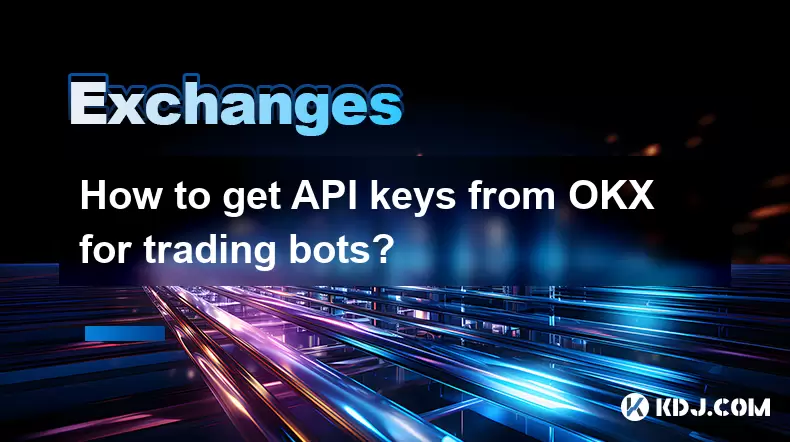
How to get API keys from OKX for trading bots?
Jul 03,2025 at 07:07am
Understanding API Keys on OKXTo interact with the OKX exchange programmatically, especially for building or running trading bots, you need to obtain an API key. An API (Application Programming Interface) key acts as a secure token that allows your bot to communicate with the exchange's servers. On OKX, these keys come with customizable permissions such ...
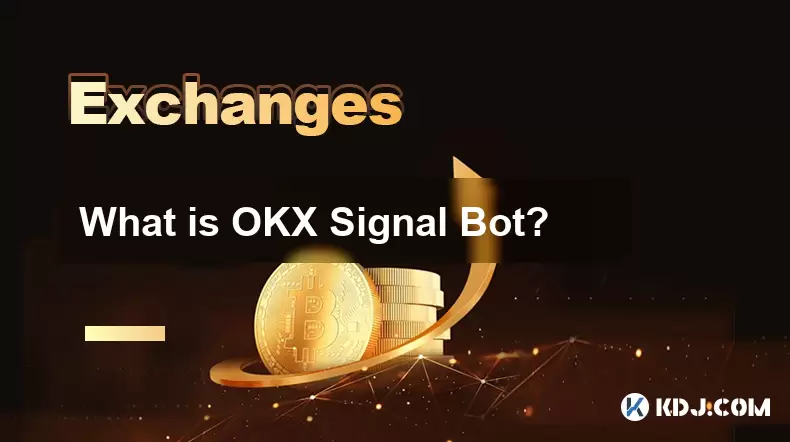
What is OKX Signal Bot?
Jul 02,2025 at 11:01pm
Understanding the Basics of OKX Signal BotThe OKX Signal Bot is a feature within the OKX ecosystem that provides users with automated trading signals and execution capabilities. Designed for both novice and experienced traders, this bot helps identify potential trading opportunities by analyzing market trends, technical indicators, and historical data. ...
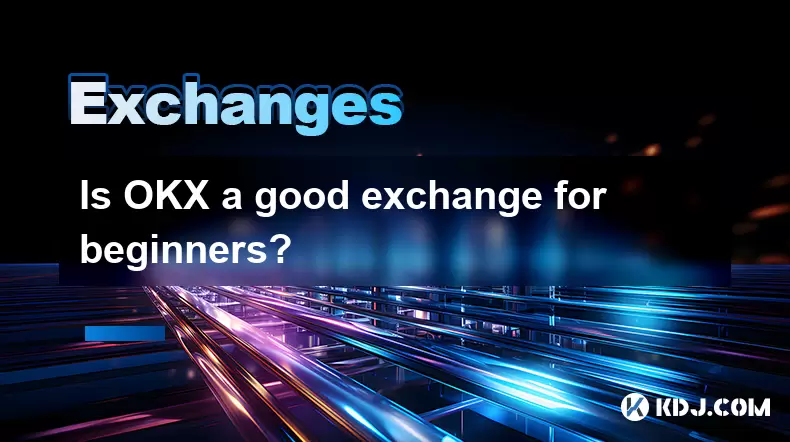
Is OKX a good exchange for beginners?
Jul 03,2025 at 05:00pm
What Is OKX and Why Is It Popular?OKX is one of the leading cryptocurrency exchanges globally, known for its robust trading infrastructure and a wide variety of digital assets available for trading. It supports over 300 cryptocurrencies, including major ones like Bitcoin (BTC), Ethereum (ETH), and Solana (SOL). The platform has gained popularity not onl...
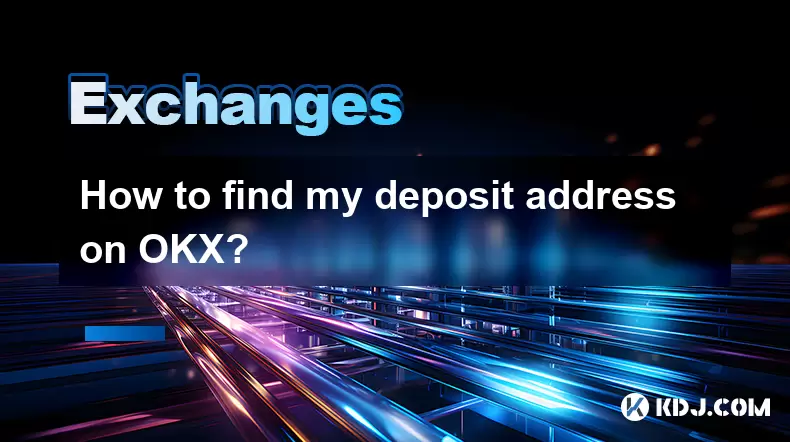
How to find my deposit address on OKX?
Jul 06,2025 at 02:28am
What is a Deposit Address on OKX?A deposit address on OKX is a unique alphanumeric identifier that allows users to receive cryptocurrencies into their OKX wallet. Each cryptocurrency has its own distinct deposit address, and using the correct one is crucial to ensure funds are received properly. If you're looking to transfer digital assets from another ...
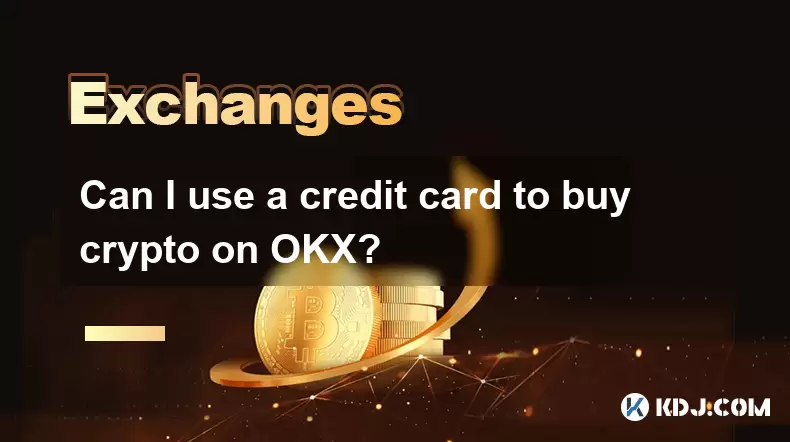
Can I use a credit card to buy crypto on OKX?
Jul 04,2025 at 04:28am
Understanding OKX and Credit Card PaymentsOKX is one of the leading cryptocurrency exchanges globally, offering a wide range of services including spot trading, derivatives, staking, and more. Users often wonder whether they can use a credit card to buy crypto on OKX, especially if they are new to the platform or looking for quick ways to enter the mark...
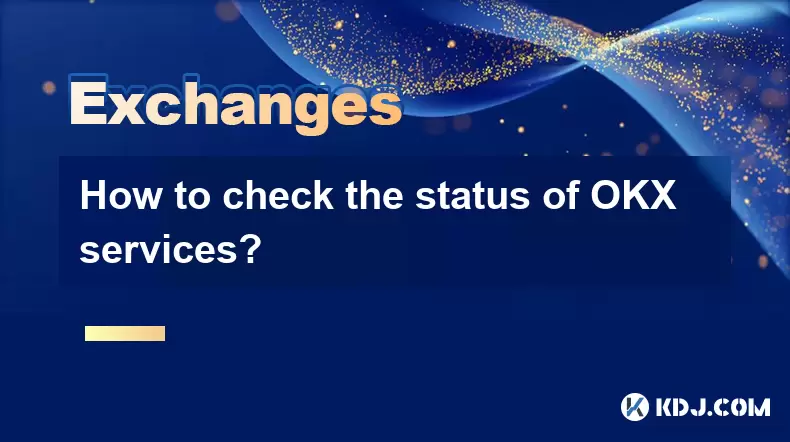
How to check the status of OKX services?
Jul 02,2025 at 11:14pm
What is OKX, and Why Checking Service Status Matters?OKX is one of the world’s leading cryptocurrency exchanges, offering services such as spot trading, futures trading, staking, and more. With millions of users relying on its platform for daily transactions, it's crucial to know how to check the status of OKX services. Downtime or maintenance can affec...

How to get API keys from OKX for trading bots?
Jul 03,2025 at 07:07am
Understanding API Keys on OKXTo interact with the OKX exchange programmatically, especially for building or running trading bots, you need to obtain an API key. An API (Application Programming Interface) key acts as a secure token that allows your bot to communicate with the exchange's servers. On OKX, these keys come with customizable permissions such ...

What is OKX Signal Bot?
Jul 02,2025 at 11:01pm
Understanding the Basics of OKX Signal BotThe OKX Signal Bot is a feature within the OKX ecosystem that provides users with automated trading signals and execution capabilities. Designed for both novice and experienced traders, this bot helps identify potential trading opportunities by analyzing market trends, technical indicators, and historical data. ...

Is OKX a good exchange for beginners?
Jul 03,2025 at 05:00pm
What Is OKX and Why Is It Popular?OKX is one of the leading cryptocurrency exchanges globally, known for its robust trading infrastructure and a wide variety of digital assets available for trading. It supports over 300 cryptocurrencies, including major ones like Bitcoin (BTC), Ethereum (ETH), and Solana (SOL). The platform has gained popularity not onl...

How to find my deposit address on OKX?
Jul 06,2025 at 02:28am
What is a Deposit Address on OKX?A deposit address on OKX is a unique alphanumeric identifier that allows users to receive cryptocurrencies into their OKX wallet. Each cryptocurrency has its own distinct deposit address, and using the correct one is crucial to ensure funds are received properly. If you're looking to transfer digital assets from another ...

Can I use a credit card to buy crypto on OKX?
Jul 04,2025 at 04:28am
Understanding OKX and Credit Card PaymentsOKX is one of the leading cryptocurrency exchanges globally, offering a wide range of services including spot trading, derivatives, staking, and more. Users often wonder whether they can use a credit card to buy crypto on OKX, especially if they are new to the platform or looking for quick ways to enter the mark...

How to check the status of OKX services?
Jul 02,2025 at 11:14pm
What is OKX, and Why Checking Service Status Matters?OKX is one of the world’s leading cryptocurrency exchanges, offering services such as spot trading, futures trading, staking, and more. With millions of users relying on its platform for daily transactions, it's crucial to know how to check the status of OKX services. Downtime or maintenance can affec...
See all articles





















